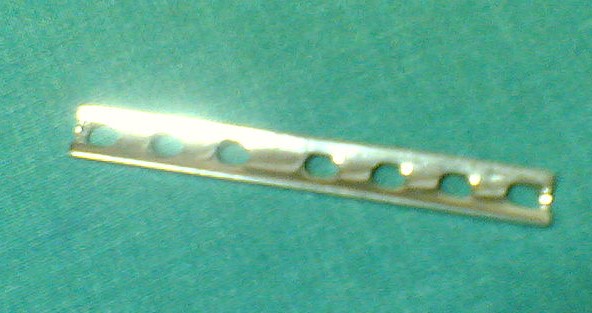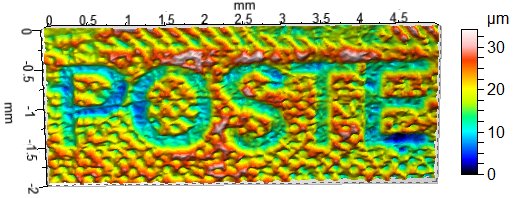|
Plates
Plate may refer to: Cooking * Plate (dishware), broad, mainly flat vessel commonly used to serve food * Plates, tableware, dishes or dishware used for setting a table, serving food and dining * Plate, the content of such a plate (for example: rice plate) * Plate, to present food, on a plate * Plate, forequarter cut of beef Places * Plate, Germany, municipality in Parchim, Mecklenburg-Vorpommern, Germany * Plate, borough of Lüchow, Lower Saxony, Germany * River Plate (other) * Tourelle de la Plate, lighthouse in France Science and technology Biology and medicine * Plate (anatomy), several meanings * Dental plate, also known as dentures * Dynamic compression plate, metallic plate used in orthopedics to fix bone * Microtiter plate (or microplate or microwell plate), flat plate with multiple "wells" used as small test tubes * Orthopedic plate, internal fixation used in orthopaedic surgery * Petri dish or Petri plate, shallow dish on which biological cultur ... [...More Info...] [...Related Items...] OR: [Wikipedia] [Google] [Baidu] |
Plate (dishware)
A plate is a broad, mainly flat vessel on which food can be served. A plate can also be used for ceremonial or decorative purposes. Most plates are circular, but they may be any shape, or made of any water-resistant material. Generally plates are raised round the edges, either by a curving up, or a wider lip or raised portion. Vessels with no lip, especially if they have a more rounded profile, are likely to be considered as bowls or dishes, as are very large vessels with a plate shape. Plates are dishware, and tableware. Plates in wood, pottery and metal go back into Ancient history, antiquity in many cultures. In Western culture and many other cultures, the plate is the typical vessel from which food is eaten and on which it is served, provided the food is not too high in liquid content. Its primary alternative is the bowl. The banana leaf predominates in some South Asian and Southeast Asian cultures. Design Shape A plate is typically composed of: * The ''well'', the bo ... [...More Info...] [...Related Items...] OR: [Wikipedia] [Google] [Baidu] |
Tectonic Plate
Plate tectonics (, ) is the scientific theory that the Earth's lithosphere comprises a number of large tectonic plates, which have been slowly moving since 3–4 billion years ago. The model builds on the concept of , an idea developed during the first decades of the 20th century. Plate tectonics came to be accepted by geoscientists after seafloor spreading was validated in the mid-to-late 1960s. The processes that result in plates and shape Earth's crust are called ''tectonics''. Tectonic plates also occur in other planets and moons. Earth's lithosphere, the rigid outer shell of the planet including the crust and upper mantle, is fractured into seven or eight major plates (depending on how they are defined) and many minor plates or "platelets". Where the plates meet, their relative motion determines the type of plate boundary (or fault): , , or . The relative movement of the plates typically ranges from zero to 10 cm annually. Faults tend to be geologically active, ... [...More Info...] [...Related Items...] OR: [Wikipedia] [Google] [Baidu] |
Plate (structure)
A plate is a structural element which is characterized by a three-dimensional solid whose thickness is very small when compared with other dimensions. The effects of the loads that are expected to be applied on it only generate stresses whose resultants are, in practical terms, exclusively normal to the element's thickness. Their mechanics are the main subject of the plate theory. Thin plates are initially flat structural members bounded by two parallel planes, called faces, and a cylindrical surface, called an edge or boundary. The generators of the cylindrical surface are perpendicular to the plane faces. The distance between the plane faces is called the thickness (h) of the plate. It will be assumed that the plate thickness is small compared with other characteristic dimensions of the faces (length, width, diameter, etc.). Geometrically, plates are bounded either by straight or curved boundaries. The static or dynamic loads carried by plates are predominantly perpendicular t ... [...More Info...] [...Related Items...] OR: [Wikipedia] [Google] [Baidu] |
Tableware
Tableware items are the dishware and utensils used for setting a table, serving food, and dining. The term includes cutlery, glassware, serving dishes, serving utensils, and other items used for practical as well as decorative purposes. The quality, nature, variety and number of objects varies according to culture, religion, number of diners, cuisine and occasion. For example, Middle Eastern, Indian or Polynesian food culture and cuisine sometimes limits tableware to serving dishes, using bread or leaves as individual plates, and not infrequently without use of cutlery. Special occasions are usually reflected in higher quality tableware. Cutlery is more usually known as ''silverware'' or ''flatware'' in the United States, where ''cutlery'' usually means knives and related cutting instruments; elsewhere cutlery includes all the forks, spoons and other silverware items. Outside the US, ''flatware'' is a term for "open-shaped" dishware items such as plates, dishes and bo ... [...More Info...] [...Related Items...] OR: [Wikipedia] [Google] [Baidu] |
Photographic Plate
Photographic plates preceded film as the primary medium for capturing images in photography. These plates, made of metal or glass and coated with a light-sensitive emulsion, were integral to early photographic processes such as heliography, daguerreotypes, and photogravure. Glass plates, thinner than standard window glass, became widely used in the late 19th century for their clarity and reliability. Although largely replaced by film during the 20th century, plates continued to be used for specialised scientific and medical purposes until the late 20th century. History Glass plates were far superior to film for research-quality imaging because they were stable and less likely to bend or distort, especially in large-format frames for wide-field imaging. Early plates used the wet collodion process. The wet plate process was replaced late in the 19th century by gelatin dry plates. A view camera nicknamed "The Mammoth" weighing was built by George R. Lawrence in 1899, sp ... [...More Info...] [...Related Items...] OR: [Wikipedia] [Google] [Baidu] |
Dynamic Compression Plate
A dynamic compression plate (DCP) is a metallic plate used in orthopedics for internal fixation of bone, typically after fractures. As the name implies, it is designed to exert dynamic pressure between the bone fragments to be transfixed. Dynamic compression is achieved either by attaching a tension device to a plate or by using a special dynamic compression plate. However, compression plating requires a longer surgical incision to allow insertion of the tension device and the possibility of refracture after the plate is removed. A neutralization plate is used to bridge a comminuted fracture; it also transmits bending or torsional forces from the proximal to the distal fragment. Plates used for buttressing prevent collapse by supporting an area of thin cortex or cancellous bone graft. When plates are used, atrophy Atrophy is the partial or complete wasting away of a part of the body. Causes of atrophy include mutations (which can destroy the gene to build up the organ), malnut ... [...More Info...] [...Related Items...] OR: [Wikipedia] [Google] [Baidu] |
Orthopedic Plate
An orthopedic plate is a form of internal fixation used in orthopaedic surgery to hold fractures in place to allow bone healing and to reduce the possibility of nonunion. Most modern plates include bone screws to help the orthopedic plate stay in place. Historic overview Prior to the invention of the orthopedic plate, metal wiring was used to solve the issue of bone fractures until about 1850. It was debated when the first use of this technique was actually made. Supposedly, the first use of this metal wiring was by the ancient Greeks. The first recorded use of metal wiring was in 1755 in a French journal. It was not until 1870, a Frenchman by the name of Laurent Berenger-Feraud began writing a book on internal fixation and bone fractures called "''"'' (a book on direct immobilization of bone fragments of fractures). All the information proved to be beneficial in medical procedures, however one thing lacked, the antiseptic treatments needed to properly administer these technique ... [...More Info...] [...Related Items...] OR: [Wikipedia] [Google] [Baidu] |
Plate Electrode
Plate may refer to: Cooking * Plate (dishware), broad, mainly flat vessel commonly used to serve food * Plates, tableware, dishes or dishware used for setting a table, serving food and dining * Plate, the content of such a plate (for example: rice plate) * Plate, to present food, on a plate * Plate, forequarter cut of beef Places * Plate, Germany, municipality in Parchim, Mecklenburg-Vorpommern, Germany * Plate, borough of Lüchow, Lower Saxony, Germany * River Plate (other) * Tourelle de la Plate, lighthouse in France Science and technology Biology and medicine * Plate (anatomy), several meanings * Dental plate, also known as dentures * Dynamic compression plate, metallic plate used in orthopedics to fix bone * Microtiter plate (or microplate or microwell plate), flat plate with multiple "wells" used as small test tubes * Orthopedic plate, internal fixation used in orthopaedic surgery * Petri dish or Petri plate, shallow dish on which biological ... [...More Info...] [...Related Items...] OR: [Wikipedia] [Google] [Baidu] |
Food Presentation
Food presentation is the art of modifying, processing, arranging, or decorating food to enhance its aesthetic appeal. The visual presentation of foods is often considered by chefs at many different stages of food preparation, from the manner of tying or sewing meats, to the type of cut used in chopping and slicing meats or vegetables, to the style of mold (cooking implement), mold used in a poured dish. The food itself may be decorated as in elaborately Cake decorating, iced cakes, topped with ornamental Sugar sculpture, sometimes sculptural consumables, drizzled with sauces, sprinkled with seeds, powders, or other toppings, or it may be accompanied by edible or inedible Garnish (food), garnishes. Historically, the presentation of food has been used as a show of wealth and power. Such displays often emphasize the complexity of a dish's composition as opposed to its flavors. For instance, ancient sources recall the hosts of Roman Empire, Roman banquets adding precious metals and ... [...More Info...] [...Related Items...] OR: [Wikipedia] [Google] [Baidu] |
Lithography
Lithography () is a planographic method of printing originally based on the miscibility, immiscibility of oil and water. The printing is from a stone (lithographic limestone) or a metal plate with a smooth surface. It was invented in 1796 by the German author and actor Alois Senefelder and was initially used mostly for sheet music, musical scores and maps.Meggs, Philip B. ''A History of Graphic Design''. (1998) John Wiley & Sons, Inc. p 146, .Carter, Rob, Ben Day, Philip Meggs. ''Typographic Design: Form and Communication'', Third Edition. (2002) John Wiley & Sons, Inc. p. 11. Lithography can be used to print text or images onto paper or other suitable material. A lithograph is something printed by lithography, but this term is only used for printmaking, fine art prints and some other, mostly older, types of printed matter, not for those made by modern commercial lithography. Traditionally, the image to be printed was drawn with a greasy substance, such as oil, fat, or wax on ... [...More Info...] [...Related Items...] OR: [Wikipedia] [Google] [Baidu] |
Intaglio (printmaking)
Intaglio ( ; ) is the family of printing and printmaking techniques in which the image is incised into a surface and the incised line or sunken area holds the ink. It is the direct opposite of a relief print where the parts of the matrix that make the image stand ''above'' the main surface. Normally copper, or in recent times zinc, sheets called plates are used as a surface or matrix, and the incisions are created by etching, engraving, drypoint, aquatint or mezzotint, often in combination. Collagraphs may also be printed as intaglio plates. After the decline of the main relief technique of woodcut around 1550, the intaglio techniques dominated both artistic printmaking as well as most types of illustration and popular prints until the mid 19th century. The word "intaglio" describes prints created from plates where the ink-bearing regions are recessed beneath the plate's surface. Though brass, zinc, and other materials are occasionally utilized, copper is the most commo ... [...More Info...] [...Related Items...] OR: [Wikipedia] [Google] [Baidu] |





